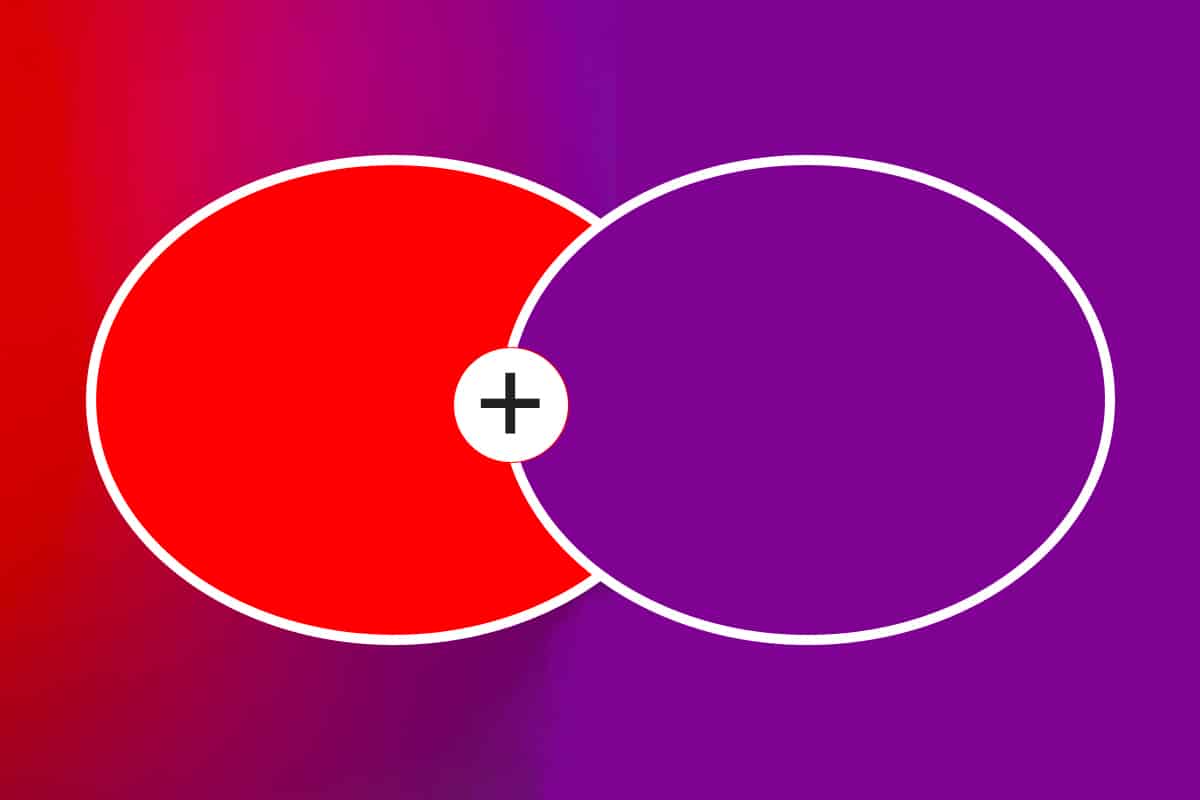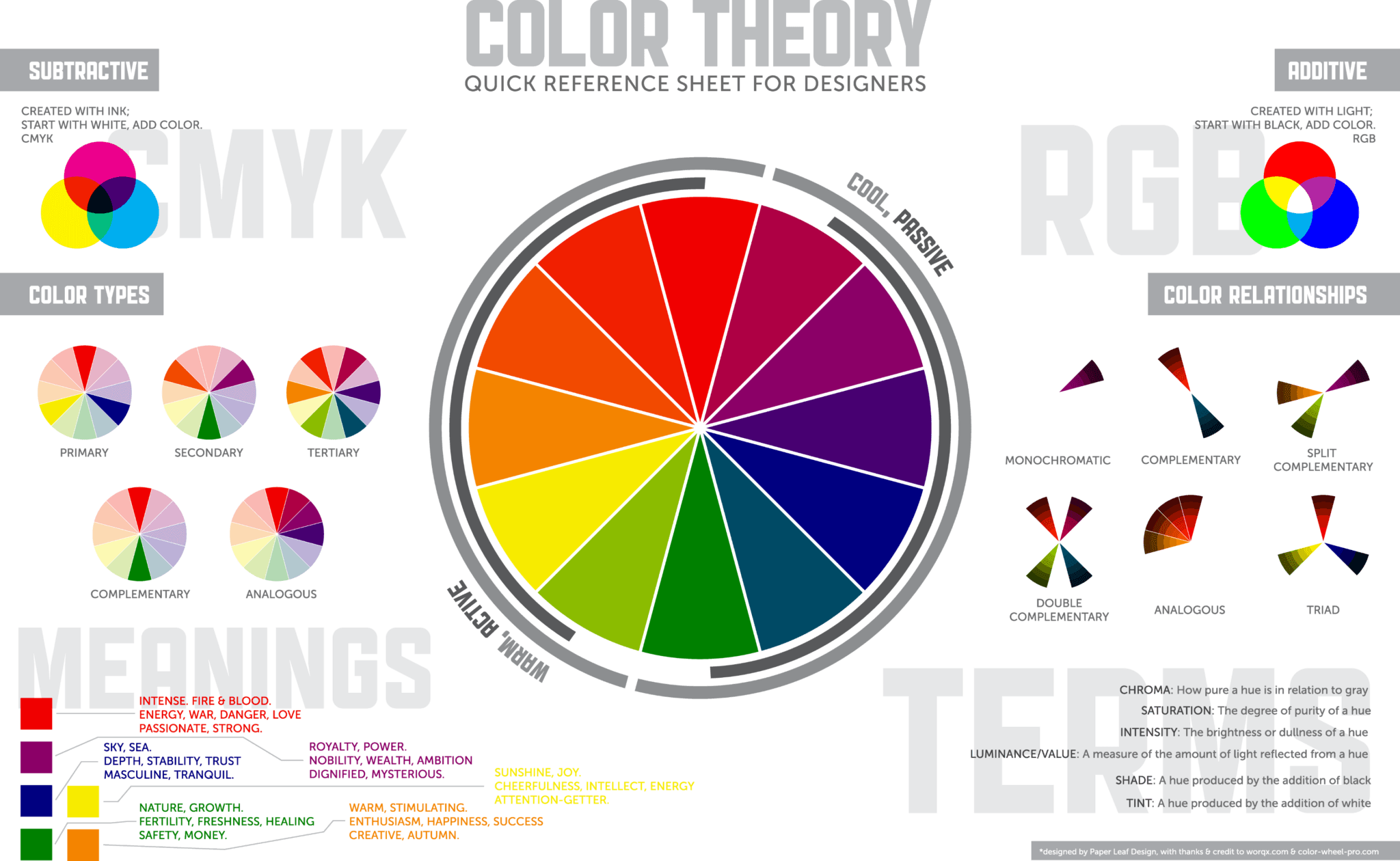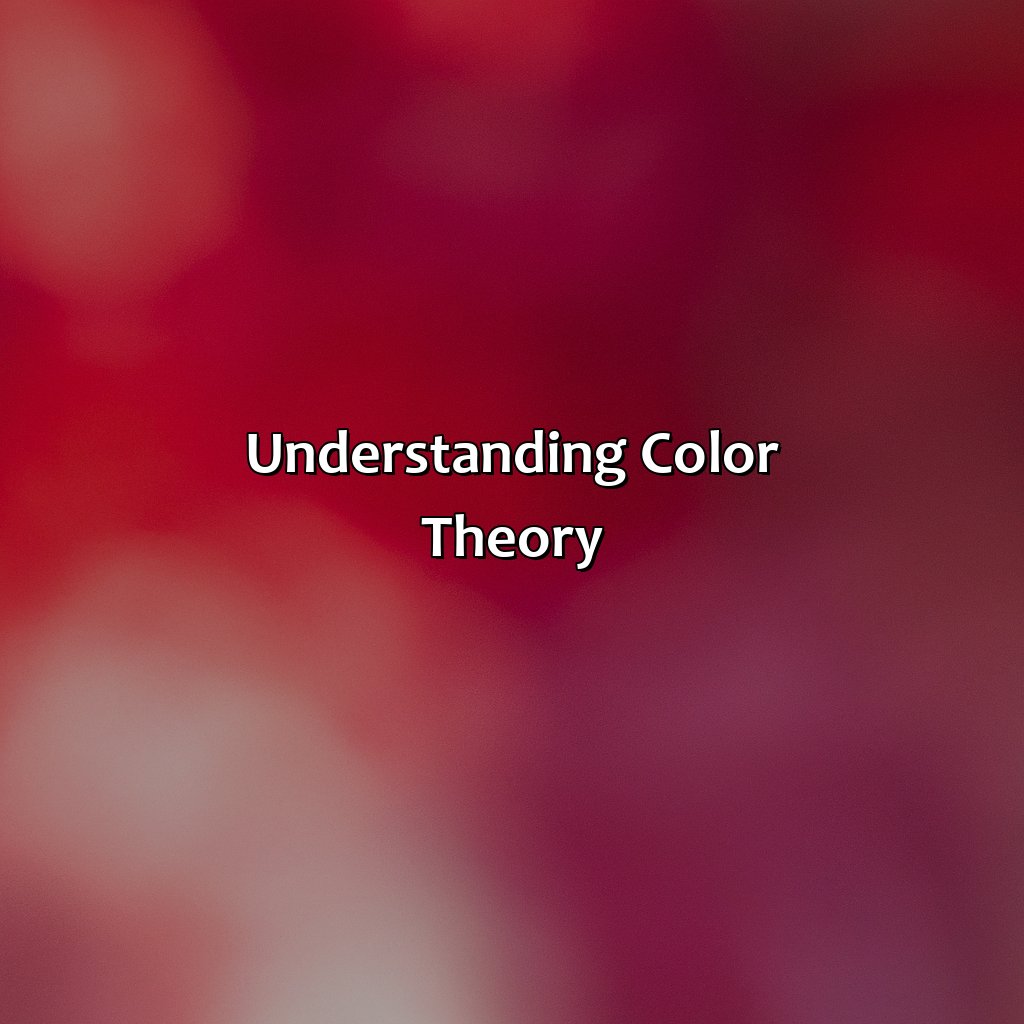Have you ever stood in front of your paints, or perhaps thought about design, and wondered, "What does red and purple make?" It's a question many curious minds ponder, and honestly, it’s a really good one. The world of colors holds so many delightful surprises, and combining two distinct hues like red and purple can lead to some truly beautiful and unexpected results. So, too it's almost, if you're looking to create something new, understanding this particular mix is a great place to start.
You see, red is one of those primary colors, a foundational shade that can't be made by mixing other colors. Purple, on the other hand, is a secondary color, born from the union of red and blue. This means purple already has a bit of red in its very essence, which makes combining it with more red a fascinating experiment. What happens when you add more of something that's already there? The answer, you'll find, is not just one color, but a whole spectrum of possibilities, depending on how you approach it. You know, it's pretty neat how that works out.
This easy guide will help you mix red and purple for all your arts and crafts, or just to satisfy your curiosity. We'll explore the main colors you can create, talk about how much of each color you should use, and even share some tips for getting just the right shade. It’s about more than just mixing; it’s about discovering new ways to express yourself with color. So, let’s get into the heart of what these two wonderful colors can do together, you know, what they really make.
Table of Contents
The Magic of Mixing Red and Purple
When you bring red and purple together, you are, in a way, deepening the red influence within purple. Purple, as we know, is already a blend of red and blue. So, when you add more red, you're essentially shifting that balance, pushing the resulting color closer to the red side of the spectrum. This process is quite fascinating, and it opens up a wide array of shades that are truly captivating. It's really something to see how just a little bit more of one color can change everything.
The resulting colors tend to have a cool tone, even though red is often seen as warm. This is because purple itself carries a cool quality from the blue it contains. The interplay between the warmth of red and the coolness of purple creates a unique balance that can be quite striking. You know, it's pretty much a balancing act, like. The final shade you get depends a lot on the specific reds and purples you start with, and also how much of each you use. It’s not just one answer; it’s a whole range of answers.
Understanding the Color Wheel: Red and Purple's Place
To really get what happens when you mix red and purple, it helps to think about the color wheel. This simple tool shows us how colors relate to each other. Red, as you might know, is a primary color. This means you can't create red by mixing any other colors together. It’s one of the basic building blocks, in a way. It’s pretty fundamental.
Purple, on the other hand, is a secondary color. It comes to life when you mix red and blue. If you look at a color wheel, purple sits right between red and blue. This position is really important because it tells us that purple naturally has both red and blue elements within it. So, when you add more red to purple, you're not just adding a new color; you're actually emphasizing one of the colors that purple is already made of. It’s kind of like adding more of an ingredient that's already in the recipe, you know? This understanding is pretty key to predicting what will happen.
The tertiary colors come into play when you mix the primary and secondary colors. These are the shades that sit between them on the wheel. When we mix red and purple, we are essentially mixing a primary color with a secondary color that already contains that primary color. This is why the results tend to be in a specific family of colors, leaning towards the redder side of purple. It's a very logical progression, if you think about it.
The Core Result: Magenta, Fuchsia, and Beyond
So, what exactly does red and purple make? The most common answer, and one that often comes up, is a range of colors like magenta or fuchsia. These are truly eye-catching shades that sit somewhere between a true red and a true purple. They have a vibrant, almost electric quality to them, which is quite appealing. It's like they have a certain spark, you know?
Magenta, for instance, is a bold, lively color that you get when you mix roughly equal amounts of bright red and deep purple. It’s a very striking shade, often associated with things that are exciting and full of energy. Fuchsia is quite similar, perhaps a little more pinkish or brighter, depending on the exact starting colors. Both of these colors are often described as having a strong presence, a real pop. They don't just sit there; they make a statement, apparently.
But the possibilities don't stop there. Depending on the proportions you use, and the specific shades of red and purple you begin with, you can also create deeper, richer tones. For example, you might get a deep burgundy, which is a very dark, reddish-purple. Or, if you use less red and more purple, you could lean towards a softer lilac or a gentle lavender shade, though these might require a lighter purple to begin with. It really depends on the balance, you know? The range is quite wide, actually.
My text tells us that "Red and purple make the color maroon." Maroon is another one of those deep, reddish-purple shades, often a bit darker and less vibrant than magenta. It has a rich, earthy feel to it. So, you see, it's not just one color, but a whole family of related shades that emerge from this combination. It's pretty cool how many options you get.
How Ratios Change Everything
The amount of each color you use is absolutely critical when mixing red and purple. This is where you really get to control the outcome. If you want a color that leans more towards red, you simply add more red to your purple. If you prefer a shade that is more purple, then you would add more purple to your red. It's a very direct relationship, in a way.
For example, if you are aiming for that bold, vibrant magenta, you might start by mixing equal amounts of a bright red and a deep purple. This balanced approach often yields the most direct representation of magenta. However, if you add just a little bit more red, you might get a shade that feels warmer, perhaps a bit more like a deep rose. Add more purple, and you could end up with a richer, darker plum-like color. It's all about playing with those proportions, you know? It's like a recipe where you adjust the ingredients.
Experimentation is key here. Start with a small amount of each color, mix them thoroughly, and then gradually add more of one color or the other until you reach the desired shade. It’s a bit of a dance, really. This method allows you to see the color change as you go, which is a great way to learn about color mixing firsthand. You know, it's very hands-on, that.
Pigments and Purity: Avoiding Muddy Colors
Sometimes, when you mix colors, you might end up with a shade that looks a bit dull or, as artists say, "muddy." This can happen when certain pigments in your paints don't play well together. My text mentions a very important point about this: "If your purple ends up looking dull or unpleasant, it could be because some red and blue paints contain a little yellow in them, Since yellow complements purple, the two create a brown color when mixed, So, even a little bit of yellow mixed in with the red or blue could throw the purple off." This is a crucial piece of information, actually.
Yellow is the complementary color to purple on the color wheel. This means they are opposite each other. When complementary colors are mixed, they tend to neutralize each other, often resulting in brownish or grayish tones. So, if your red or blue paint (which makes purple) has even a tiny hint of yellow pigment, it can make your mixed purple look less vibrant. When you then add more red, that hidden yellow might just push the whole mixture towards an undesirable brown. It's something to really watch out for, you know?
To avoid this, it's a good idea to use paints with pure pigments if you can. Look for reds that are truly red, without any orange or yellow undertones, and blues that are pure, without any green or yellow hints. This helps ensure that your homemade purple is as clean and vibrant as possible, giving you a better starting point for mixing with red. It’s a small detail, but it makes a big difference, apparently.
Practical Tips for Mixing Red and Purple
Mixing colors can be a lot of fun, and a little bit of planning can go a long way. Here are some practical tips to help you get the most out of your red and purple mixing adventures:
Start Small: Always begin with small amounts of paint. It's much easier to add more color than to take it away. This saves paint and helps you learn the ratios. You know, it’s a good habit to get into.
Use a Mixing Palette: A clean palette or a piece of plastic is perfect for mixing. This keeps your main paint tubes clean and allows you to see the color clearly as it develops. It’s pretty essential, really.
Mix Thoroughly: Make sure to mix the colors completely. Sometimes, streaks of unmixed color can make the final shade look uneven. Use a palette knife or a brush to really combine them. You want a consistent color, you know?
Test on Scrap Material: Before applying your mixed color to your main project, test it on a scrap piece of paper or canvas. Colors can look different when wet than when dry, and also depending on the surface they are on. This step is pretty important, actually.
Keep Notes: If you find a shade you really love, write down the ratio of red to purple you used. This way, you can recreate it later. It's a bit like keeping a recipe book for your colors, so.
Experiment with Different Reds and Purples: Not all reds and purples are the same. A warm red (like cadmium red) will produce different results than a cool red (like alizarin crimson). The same goes for purples. Try mixing a warm red with a cool purple, or vice versa, to see the varied outcomes. The possibilities are quite numerous, you know.
Why This Combination Matters
The combination of red and purple isn't just for artists mixing paint. These colors, and the shades they create together, have a significant presence in many aspects of our lives, from how we see the world to how we express ourselves. It’s pretty interesting how colors can have such an impact, honestly.
Artistic Expression and Design
For artists, understanding what red and purple make is incredibly valuable. These colors can convey a wide range of emotions and ideas. Purple has always been considered a color of royalty, something quite majestic, often tied to kings and queens from the ancient world. Red, on the other hand, often represents passion, energy, or strength. When you mix them, you get colors that carry a bit of both worlds, a unique blend of power and sophistication. It’s a very rich combination, you know?
Think about a deep burgundy in a painting; it can evoke a sense of luxury or mystery. A vibrant magenta can bring a burst of energy and modernity to a design. These shades are not just visually appealing; they also communicate feelings and moods. Artists use this knowledge to create depth, contrast, and visual interest in their works. It’s a really powerful tool, actually.
Designers, too, use these color combinations in everything from fashion to interior design. A room with accents of deep fuchsia can feel bold and inviting, while a garment in a rich maroon might suggest elegance and warmth. The ability to create these specific shades by mixing red and purple gives designers more control over their palette and the messages they want to send. It’s pretty essential for their work, you know.
Everyday Applications
Beyond the art studio, the knowledge of what red and purple make can be surprisingly useful in everyday life. For instance, if you're trying to match a specific fabric color or touch up a piece of furniture, knowing how to blend these two colors can save you a trip to the store. You might have red and purple paints at home, and with a little experimentation, you can create that perfect custom shade. It’s pretty convenient, honestly.
Consider gardening, for example. When planning a flower bed, knowing that certain red and purple flowers will naturally complement each other or create a harmonious blend of shades can help you design a more visually pleasing garden. Or, in fashion, understanding that pink and purple complement each other well because pink is a lighter shade of red, can help you put together outfits that just work. These little bits of color knowledge can really make a difference, you know?
From choosing paint for a room to selecting clothing, understanding how colors interact, especially how red and purple combine, allows for more informed and creative choices. It’s about seeing the world through a more colorful lens, and perhaps even finding new ways to express your own style. It’s really quite empowering, that.
Frequently Asked Questions
People often have specific questions when it comes to mixing red and purple. Here are some common ones that come up, you know, things people often ask.
What color does red and purple make in paint?
When you mix red and purple paints, you primarily create shades of magenta or fuchsia. You can also get deeper, richer tones like maroon or burgundy, depending on the specific red and purple you use and the amounts of each. It's a whole range, really, not just one single color. So, it’s pretty versatile.
Can red and purple make brown?
Generally, mixing pure red and pure purple won't directly make brown. However, if your red or blue paints (which make purple) contain even a small amount of yellow pigment, that hidden yellow can react with the purple to create a duller, brownish color. This happens because yellow is purple's complementary color, and mixing complements tends to neutralize them into brownish or grayish tones. So, it's possible, but it's usually a sign of impure pigments, you know.
What's the difference between magenta and fuchsia?
Magenta and fuchsia are very similar colors, both being vibrant, reddish-purple shades. Magenta is often described as a bold, slightly cooler reddish-purple. Fuchsia, on the other hand, tends to be a bit brighter and sometimes has a slightly more pinkish or vivid quality to it. The exact distinction can be subtle and sometimes depends on the specific shade being referenced. They are very close in appearance, honestly.
Understanding when to use “do” and “does” is key for speaking and writing English correctly. Use “do” with the pronouns i, you, we, and they. For example, “i do like pizza” or “they do not want to go.” on the other hand, use “does” with the third person singular pronouns. Learn more about on our site, and link to this page
Mixing red and purple truly opens up a world of rich and expressive colors. From the bright pop of magenta to the deep elegance of maroon, the possibilities are quite exciting. By understanding the basics of color theory, paying attention to your ratios, and perhaps even considering the purity of your pigments, you can create a wide array of stunning shades. It’s a rewarding process, actually, that allows for so much creative freedom. So, why not grab some paints and see what beautiful new colors you can discover today? It's really worth a try, you know.



Detail Author:
- Name : Prof. Gregg Reinger
- Username : borer.dina
- Email : linda.reichert@zemlak.com
- Birthdate : 1993-12-24
- Address : 653 Jarrod Loaf Bergestad, AR 11839-2357
- Phone : 1-216-737-2416
- Company : Mann-Herzog
- Job : Food Preparation Worker
- Bio : Libero qui animi quia facilis dolorum nesciunt. Distinctio architecto laborum minima voluptas cum minima similique veritatis. Consequatur corporis ex corrupti quas.
Socials
tiktok:
- url : https://tiktok.com/@amalia_xx
- username : amalia_xx
- bio : Dolorem natus sunt delectus asperiores harum voluptas.
- followers : 785
- following : 519
linkedin:
- url : https://linkedin.com/in/amalia.kub
- username : amalia.kub
- bio : Dignissimos perferendis quo illum quam sed non.
- followers : 5893
- following : 952
twitter:
- url : https://twitter.com/akub
- username : akub
- bio : Porro sunt repellendus occaecati et. Architecto expedita fugit architecto ducimus aut ad. Eius autem laboriosam suscipit sit.
- followers : 362
- following : 1175
instagram:
- url : https://instagram.com/amalia.kub
- username : amalia.kub
- bio : Velit id aut ab. Reiciendis quas nihil ipsa magnam cupiditate autem. Similique autem amet saepe.
- followers : 5729
- following : 2297